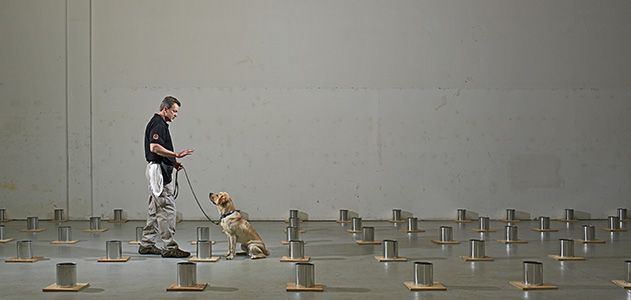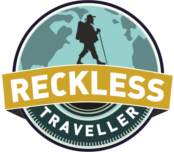On October 1, 1933, a Boeing 247 bound from Newark, New Jersey
to Oakland, California, exploded over Chesterton, Indiana.
All aboard perished. It was destroyed by a nitroglycerine
bomb planted by a Chicago mobster to settle a score. It
is the first proven act of commercial airline sabotage.
For many people, going to the airport to catch a flight is tinged with a certain anxiety. We all know that commercial air travel is the safest form of transport, but we also know that it is not entirely without grave risk — crashes, bombs, highjackings and the like — so we’re apt to worry a bit. The odds against disaster are millions to one, but many of us buy lottery tickets with longer odds, and expect to win.
Transport authorities are always on the lookout for explosives. Commercial airliner bombings occur on average every two or three years, the the last one being in 2016, in Somalia—the handiwork of El-Shabaab. Terrorists do love “soft targets”. We may be just about due.
To respond to this kind of threat, airline authorities have turned to trained dogs for assistance. We’ve all seen these stalwart creatures at airports, walking around with their handlers, sniffing everything and everyone up and down, inside and out.
When you see one of these no-nonsense animals working, certain questions naturally arise: how long have dogs been used for this type of thing? How good are they at it? How are they trained and maintained? Which breeds are best? What disasters have been averted? In my mind there’s no end of questions— because of my natural curiosity, and the fact that I am totally crazy about dogs.

These dogs are, of course, looking for something that gives off an odor— in this case explosives. But dogs are also wonderful at detecting anything they’ve been trained to find: drugs, blood, body parts, currency, guns, electronics, fire accelerants, stowaways and so on.
Dogs are ideal for this type of work mainly because of their powers of smell (olfaction) — and their marvellous trainability. The difference in the sense of olfaction in humans and dogs is beyond comprehension. Depending on the particular animal, a dog can smell between 10,000 and 100,000 times better than we can. Dogs possess about 300 million olfactory receptors; humans have about six million. Dogs can detect some odors in parts per trillion.
Using vision as an analogy, if you can see something well at a third of a mile, the dog can see it at 3,000 miles. Moreover, the part of the canine brain devoted to smell is proportionately forty times larger than in humans. And, note this: dogs can use each nostril independently. You might say a dog smells in stereo.
Our knowledge of the history of dogs is incomplete and puzzling. We do know that the dog was human’s first domesticated animal, perhaps 15,000 years ago— and what a success it has been! Incredibly, genetic studies suggest that all dogs have descended from a particular mating pair of grey wolves (Canus Lupus) in subarctic Eurasia— who, by inference, were in contact with humans who trained them. Their descendents have been selectively bred by humans over the centuries to produce various appearances, traits and abilities. (This sounds persuasive, but I personally find it hard to understand how breeding two wolves and their successive offspring can have ever produced, say, a Chihuahua).
Throughout recorded history dogs have been used by the military in important roles— guard duty, carrying messages, finding landmines, providing companionship and so on. In 1899 police in Ghent, Belgium began training dogs to help in their work; other countries followed suit. The first official “bomb-dogs” were used by U.S. forces to detect German landmines in North Africa. Many were killed in the line of duty.
Many breeds can be used as forensic sniffers— the most popular are German Shepherds, Dutch Shepherds, Belgian Malinois, Labrador and Golden Retrievers, German Short-haired Pointers, Wirehaired Pointers and Vizslas. More important than the actual breed is the individual dog’s enthusiasm for training.

Bomb-Dog Randomia:
- A bomb-dog learns like this: the trainer will hold out a sample of a certain explosive near the dog’s nose. If he sniffs it, he gets a reward. This process is repeated many times and with several other compounds, until the dog can detect all common explosives.
- The dog and handler work in complete silence. The dog signals a “find” by sitting.
- It costs the Transportation Security Administration (T.S.A.) branch of the U.S. Department of Homeland Security $218,000 to buy and train a suitable dog. One-to three year-olds are chosen and a dog will work 6-8 years before retirement.
- The dog normally goes home with its handler to sleep; the handler cares for the dog like a parent would a child. This, to me, is a beautiful arrangement.
- The T.S.A. has about 1,000 dogs in its work force and needs 350 new ones yearly. This presents a procurement challenge requiring some creativity— allegedly including some shadowy eastern European sourcing.
- Interestingly, guilty persons often emit a scent of fear. This compound has been synthesized for training purposes.
- Chinese authorities have developed a “scent bank” composed of odors gathered from criminals, suspects and crime scenes.
- The T.S.A. has a wonderful program for adopting-out retired dogs. If you’re interested, see www.tsa.gov/canine-adoption-program
It was King Frederick of Prussia (1712-1786) who first called a dog “man’s best friend”. As for unconditional love, loyalty and usefulness, the animal world has no finer example. This goes double for the sturdy bomb-dog. So, the next time you see one at work, carefully observe this quiet marvel. It’s sure to make you smile— and hopefully— to soothe your nerves.






Facebook Comments